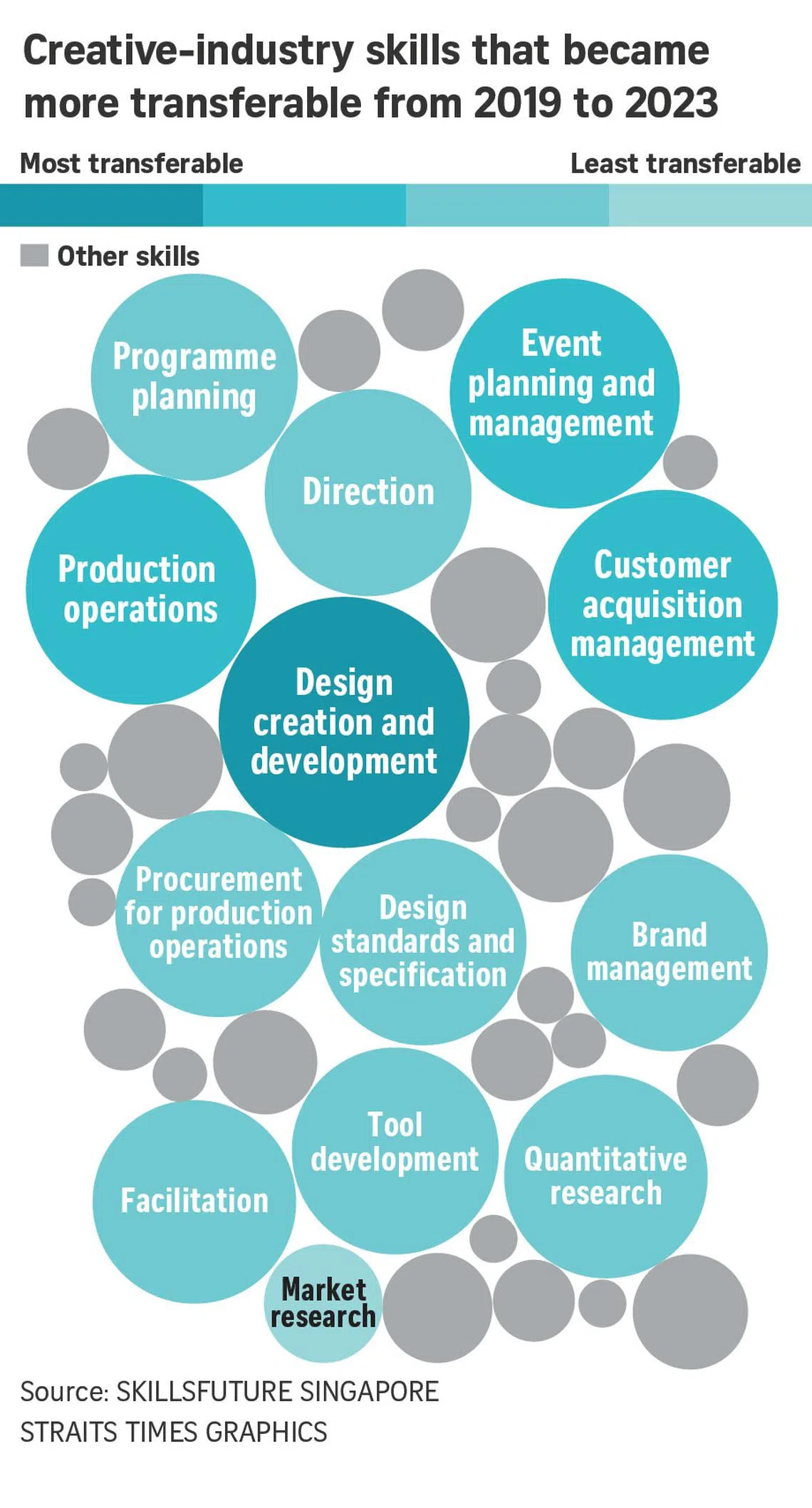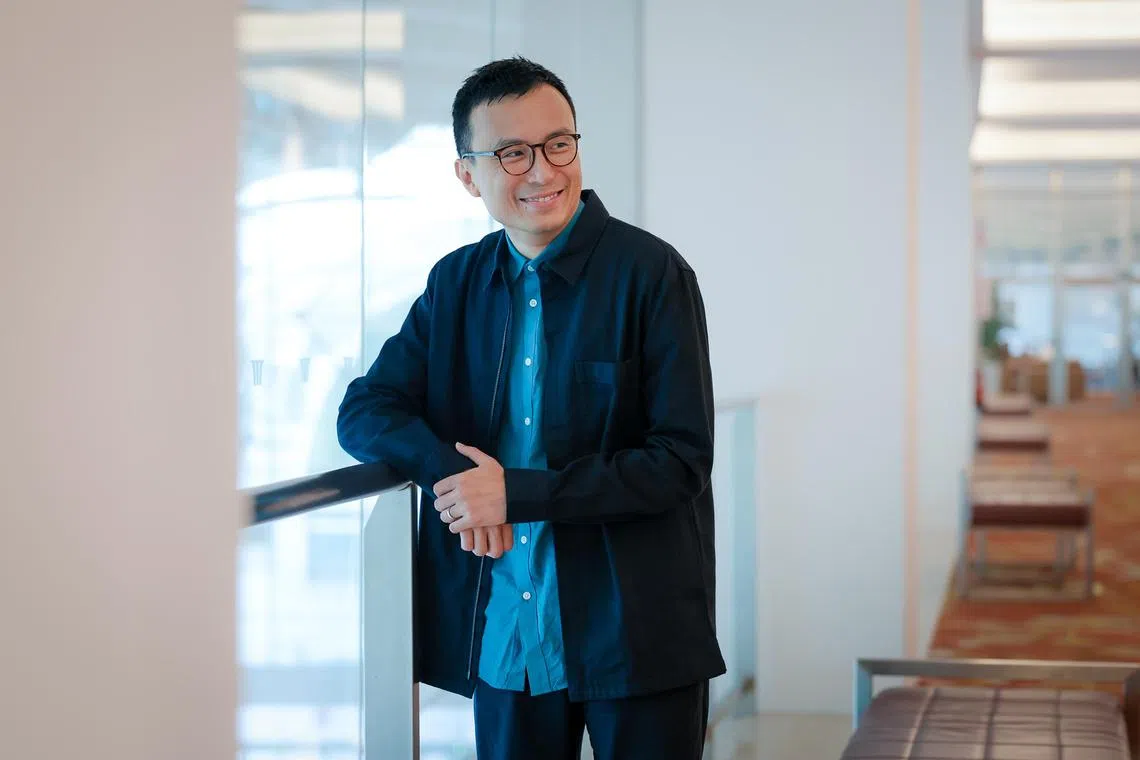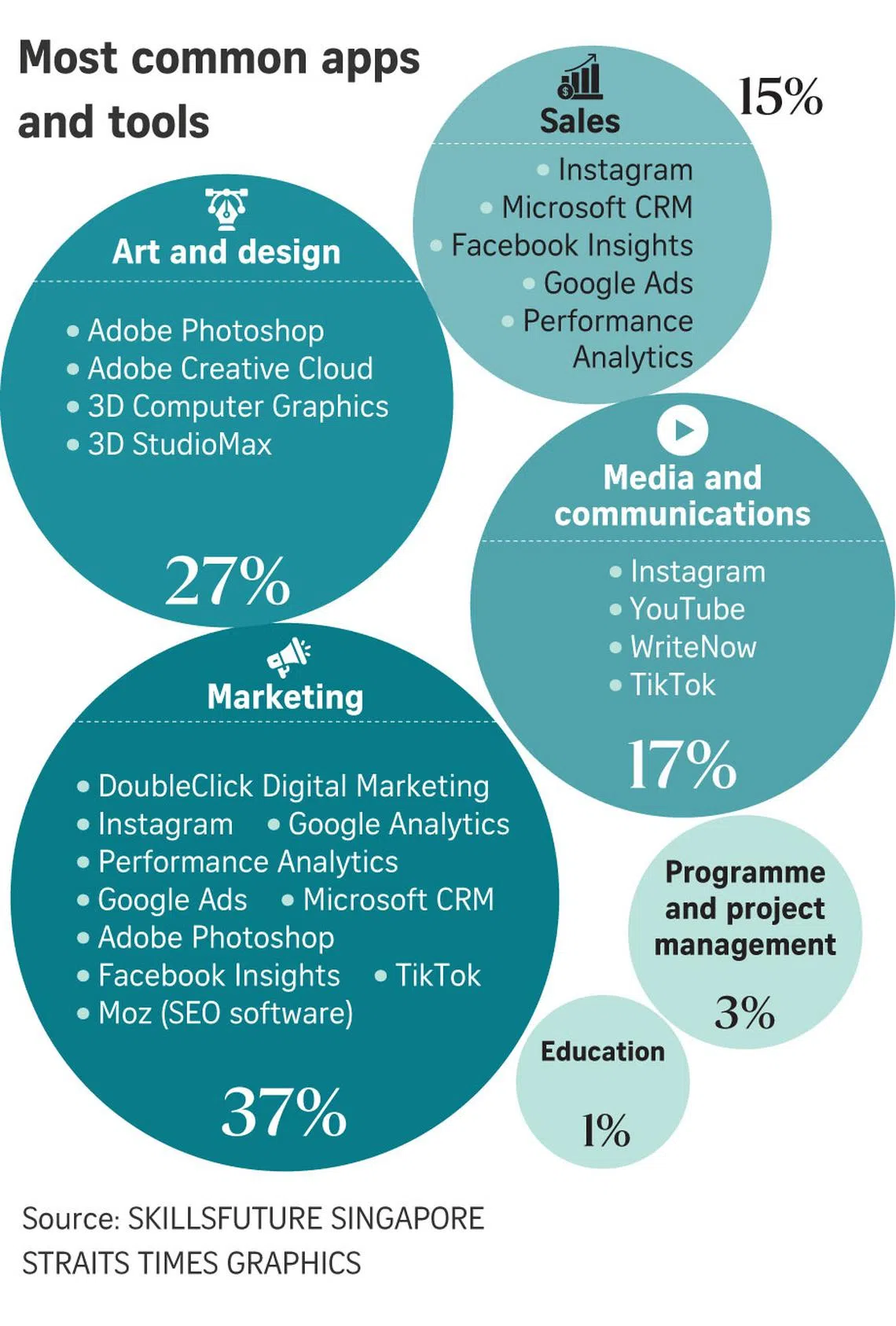More ‘non-creative’ job roles require creative skills: SkillsFuture report
Sign up now: Get tips on how to grow your career and money

The SkillsFuture Singapore report showed that 40 creative skills have become more transferable since 2019.
PHOTO: ST FILE
Follow topic:
SINGAPORE - Having creative skills pays off, even if one is not in a job role that is traditionally part of the creative sector.
A report by SkillsFuture Singapore (SSG) that outlines priority skills and job roles in growth economies showed that 70 per cent of professionals in “non-creative” job roles require creative skills for work. Such jobs could be in areas such as information technology, engineering and business development.
For instance, software developers need to understand design to make user-friendly apps, and apart from just running a kitchen, restaurant managers need branding skills to attract customers.
The fourth edition of SSG’s Skills Demand for the Future Economy Report was launched on Jan 22 by Minister of State for Education and Manpower Gan Siow Huang.
The latest report includes a feature on creative skills, which refers to those that require innovative thinking and the ability to generate original ideas or concepts.
Forty creative skills – from design creation and development to brand management – have become more transferable since 2019. This indicates that more job roles are increasingly asking for such skills, the report stated.
Of the 150,000 creative professionals in Singapore, one-third work in companies under creative industries, such as the performing arts, product design and media. The other two-thirds take on creative roles in other companies.

The report found that skills related to business, financial management and people management remain in high demand for jobs in creative industries, while the demand for skills related to operation excellence is growing.
Speaking at the launch event held at the Sands Expo and Convention Centre, Ms Gan said the report explores the impact of artificial intelligence (AI) on creative industries, and creates awareness of creative skills that non-creative professionals will increasingly need.
“While GenAI (generative AI) tools can support creative work, it is also important to guide ethical use of these tools.”

Minister of State for Education and Manpower Gan Siow Huang said the report explores the impact of artificial intelligence on creative industries, and creates awareness of creative skills that non-creative professionals will increasingly need.
ST PHOTO: GAVIN FOO
SSG surveyed about 100 creative professionals, and over 50 per cent of them use GenAI tools, including popular ones such as ChatGPT and Adobe Firefly. Such tools are increasingly being used in creative industries for tasks such as creating social media content, or 3D modelling in jewellery making, the report said.
Mr Edwin Poh, 47, course chair for communication design at Temasek Polytechnic, said creative tools such as Adobe and Canva have allowed many professionals in non-creative job roles to build basic creative skills.
Employers are increasingly seeing the value of hiring those who can perform tasks requiring creative skills, even if it is not in their core job role, he said.
“As creative professionals, we may feel threatened that there are these groups of people who are now able to do some level of creative work. So we will need to add value, or differentiate ourselves and do better in that level of work,” said Mr Poh.
The report is available at /

Mr Edwin Poh, 47, course chair for communication design at Temasek Polytechnic, said creative tools such as Adobe and Canva have allowed many professionals in non-creative job roles to build basic creative skills.
ST PHOTO: GAVIN FOO
Applying skills to different fields
Similar to the last three editions, the latest report spotlights the care, digital and green economies as they continue to be key growth areas.
Based on data from 2022 to 2024, SSG looked at the demand for priority skills in these three economies.
It found that 71 skills continued to be highly sought after. These include skills such as data management and problem management.
Demand rose for 37 skills, including change management and data visualisation, as more sectors adopted a particular business practice or technology.
And 34 skills, such as green facilities management and research design, are expected to become more sought after in 2025.
New online resources
SSG has also launched an online portal, jointly developed with the Government Technology Agency, that will house earlier editions of the Skills reports and feature new interactive resources.
These include six dashboards, five of which are new. Individuals can use the data from these dashboards in various ways to get personalised insights about jobs and career pathways.
Mr Yeo Wee Siong, director of the Jobs-Skills Insights division at SSG, said: “There’s only so much we can fit into a report... but with the power of data in the hands of individuals, we hope they can try out the dashboards and seek insights for themselves.”
On one of the dashboards, SSG has curated a list of more than 5,000 apps and tools to provide a more complete picture of what a job requires, alongside skills.
The top 20 apps and tools for 2023 captured in the report comprised mainly productivity tools, programming languages, and software designed for managing data, processes and projects.

With the Job Requirements dashboard, users can also see which skills, apps and tools are needed for job roles.
And on the Priority Skills dashboard, skills are organised into four categories, to indicate whether they are in high or low demand, and if they are highly transferable or not. This refers to whether skills can be applied to different fields.

The Priority Skills dashboard, showing the placement of skills on a quadrant according to their demand and transferability.
PHOTO: SKILLSFUTURE SG
To explore how to move across careers, individuals can use the Skills and Job Mobility dashboard.
This takes into account five factors that impact career transition, which are how similar skills are, and the historical transitions across jobs, wage, demand and growth.

The Skills and Job Mobility Dashboard, showing the distribution of job roles.
PHOTO: SKILLSFUTURE SG
Said Mr Yeo: “When using the dashboard, users can better understand the factors at play. They can also see the upskilling pathways available if they want to move from one job to another.”
Mr Amos Tan, chief core skills officer at NTUC LearningHub, which provides training courses, said some interactive features of the new dashboards are useful, especially when reviewing and curating content for adult learners.

Mr Amos Tan, chief core skills officer at LearningHub, said some interactive features of the new dashboards on SkillsFuture Singapore’s online portal are useful, especially when reviewing and curating content for adult learners.
ST PHOTO: GAVIN FOO
He said the dashboards also capture how GenAI increasingly impacts jobs and skills, signalling to training providers that there is a need for related courses.
“But while we focus on the creativity part, we must not forget about teaching ethical and responsible use.”
Elisha Tushara is a correspondent at The Straits Times, specialising in Singapore’s education landscape.


